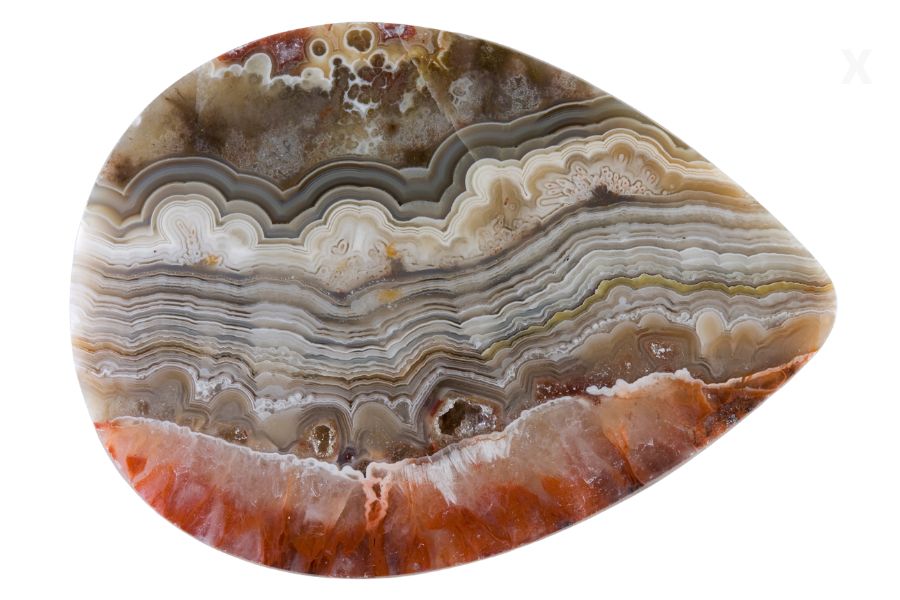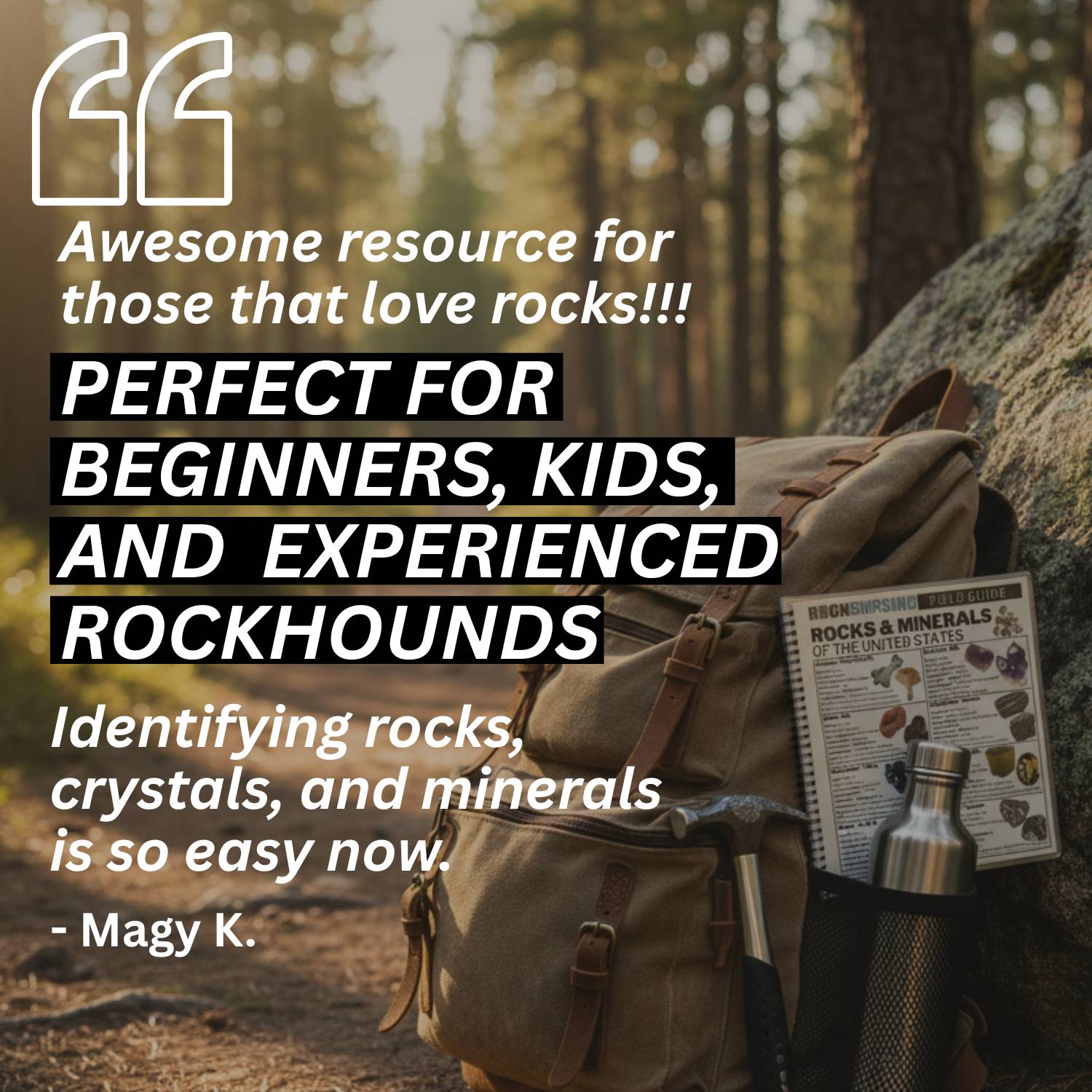There are a number of great places to find agates in Georgia. If you love colorful rocks and hidden treasures, Georgia is a great place to start.
These beautiful stones sparkle with bright bands of red, orange, yellow, and even purple, and they can be found tucked away in rivers, creeks, and rocky hillsides across the state.
Searching for agates is like going on a real life treasure hunt. You never know when you will spot that special shine in the water or a patterned stone hiding in the dirt.
The best part is that anyone can do it. All you need are sharp eyes, a little patience, and a sense of adventure. We will guide you to the top spots in Georgia where agates can be discovered and share tips to make your search fun and successful. Get ready to grab your rock bag and explore.
What is Georgia Agate?
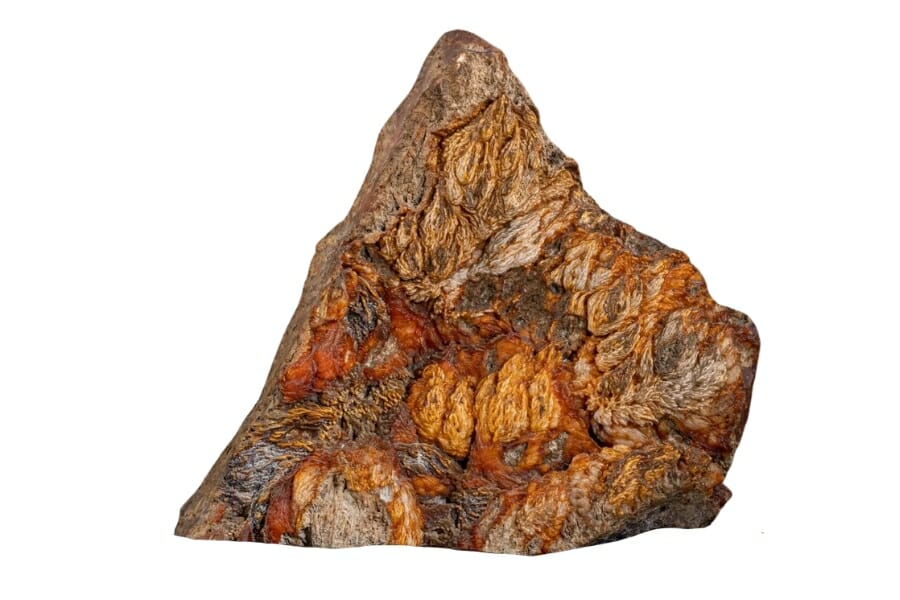
Agate specimens are valued for their bright colors, intricate patterns, and unique banding. Each piece of agate, from the clear and milky white ones to the bright blue, green, and red ones, is a work of art made by nature.
They also have exciting structures inside, like bands, swirls, or even pieces of other minerals, which add to their beauty.
It’s made by a process called “secondary deposition,” in which silica-rich fluids flow into the cracks and holes in rocks and harden into agate. This process takes a long time, sometimes millions of years, and it happens when water with dissolved silica gets into volcanic or sedimentary rocks.
Find out what the price of agates is with the help of our article.
Blue Lace Agate
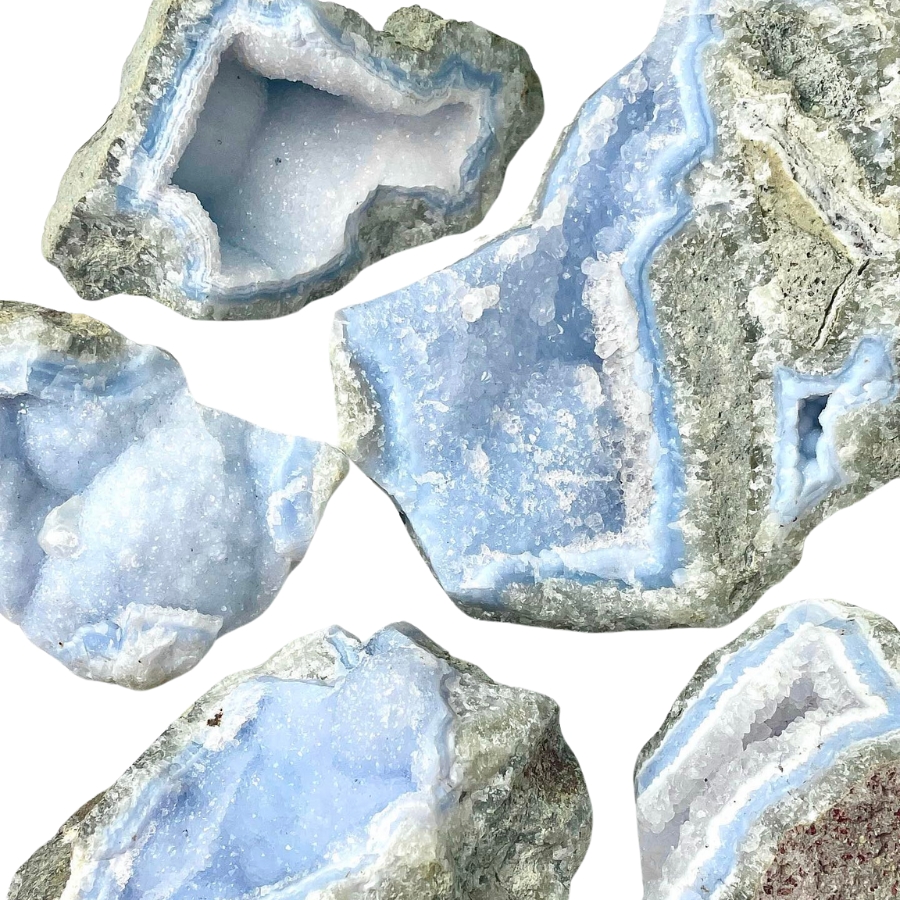
Blue lace agate is like the soft, sky-blue waves with lines that swirl and twist like delicate lace.
Its pattern comes from slow-forming layers of quartz, which create those beautiful, lace-like bands.
The bands of this agate type are often in shades of light blue, white, and sometimes a bit of grey. It’s different from other agates, which usually have more intense colors and stronger patterns.
The value of blue lace agate lies in its soft, tranquil look and the feeling of calm it brings. It’s often used in jewelry or as a decorative stone.
If you want REAL results finding incredible rocks and minerals you need one of these 👇👇👇
Finding the coolest rocks in isn’t luck, it's knowing what to look for. Thousands of your fellow rock hunters are already carrying Rock Chasing field guides. Maybe it's time you joined the community.
Lightweight, mud-proof, and packed with clear photos, it’s become the go-to tool for anyone interested discovering what’s hidden under our red dirt and what they've already found.
Join them, and make your next rockhounding trip actually pay off.
What makes it different:
- 📍 Find and identify 140 incredible crystals, rocks, gemstones, minerals, and geodes across the USA
- 🚙 Field-tested across America's rivers, ranchlands, mountains, and roadcuts
- 📘 Heavy duty laminated pages resist dust, sweat, and water
- 🧠 Zero fluff — just clear visuals and straight-to-the-point info
- ⭐ Rated 4.8★ by real collectors who actually use it in the field
Moss Agate
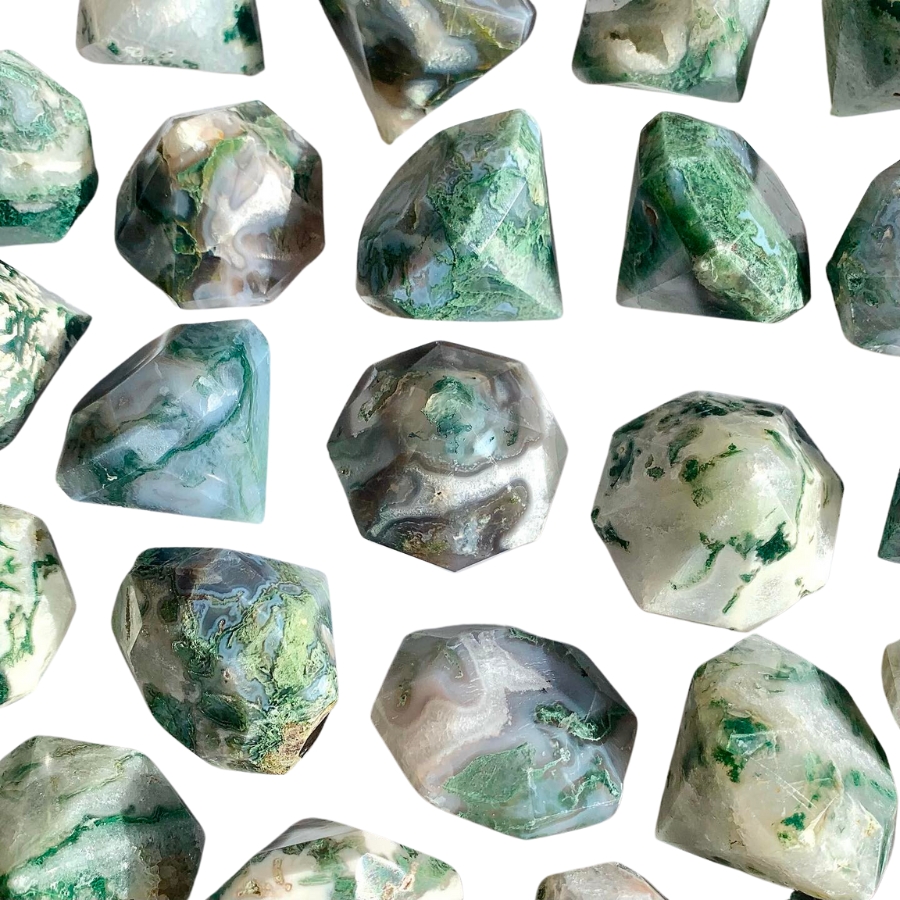
Instead of having the typical banding for which the different types of agates are known, moss agate has green inclusions that look like moss or trees.
These green patterns aren’t real plant material, though. They’re minerals like chlorite or iron oxide.
In some cultures, this type of agate is known as the “gardener’s stone” because of its green, plant-like appearance. It’s believed to help plants grow.
The price of moss agate can vary. It’s often quite affordable, but the more distinct and picturesque the green patterns, the more it might cost.
Fire Agate
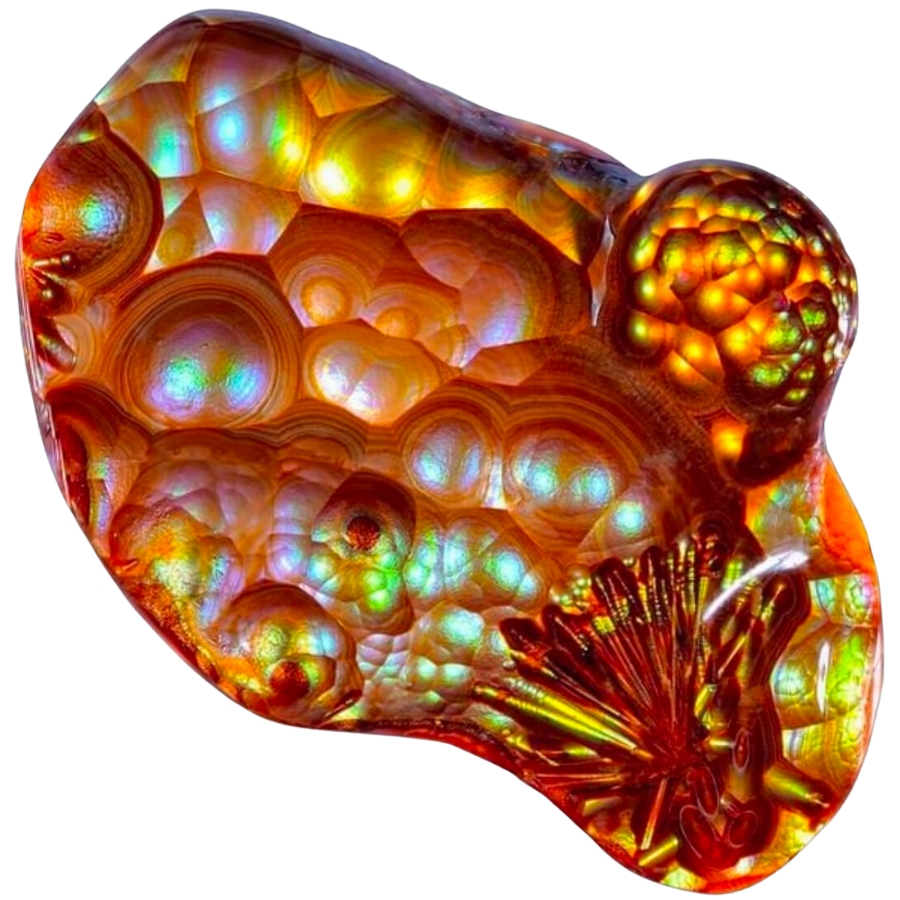
Fire agate is known for its incredible colors and the way it sparkles like fire. It’s got layers of silica and iron oxide that reflect light, creating a fiery effect.
When you look at fire agate, it’s like seeing flames trapped inside. Its colors can range from reds and oranges to greens and golds, all shimmering under the surface.
You might be wondering, “What is fire agate worth?” Well, its value comes from its rare beauty. The more color and sparkle, the more valuable the stone is.
Its fiery iridescence and lively play of color are used in jewelry pieces that are meant to stand out.
Dendritic Agate
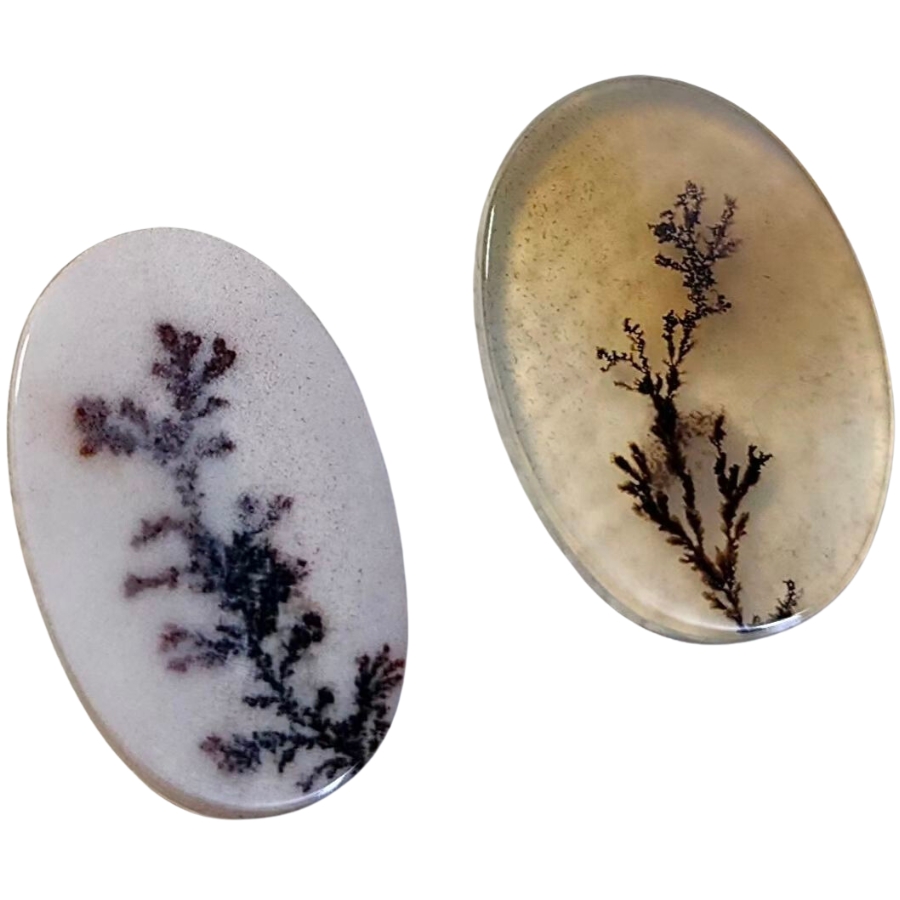
Dendritic agate is known for patterns that look like tiny trees or shrubs. Like moss agate, these patterns aren’t actual plants. They’re made of minerals, mostly manganese or iron oxides.
When you look at a dendritic agate, it’s like peering into a miniature forest or a frosty winter landscape.
The base of the stone is usually translucent to opaque, and the “dendrites”— those tree-like patterns— are often black or brown.
When it comes to how much dendritic agate is worth, it can vary. The more detailed and distinct the patterns are, the more it’s usually valued.
In some cultures, dendritic agate is believed to bring fullness and richness to life.
Crazy Lace Agate
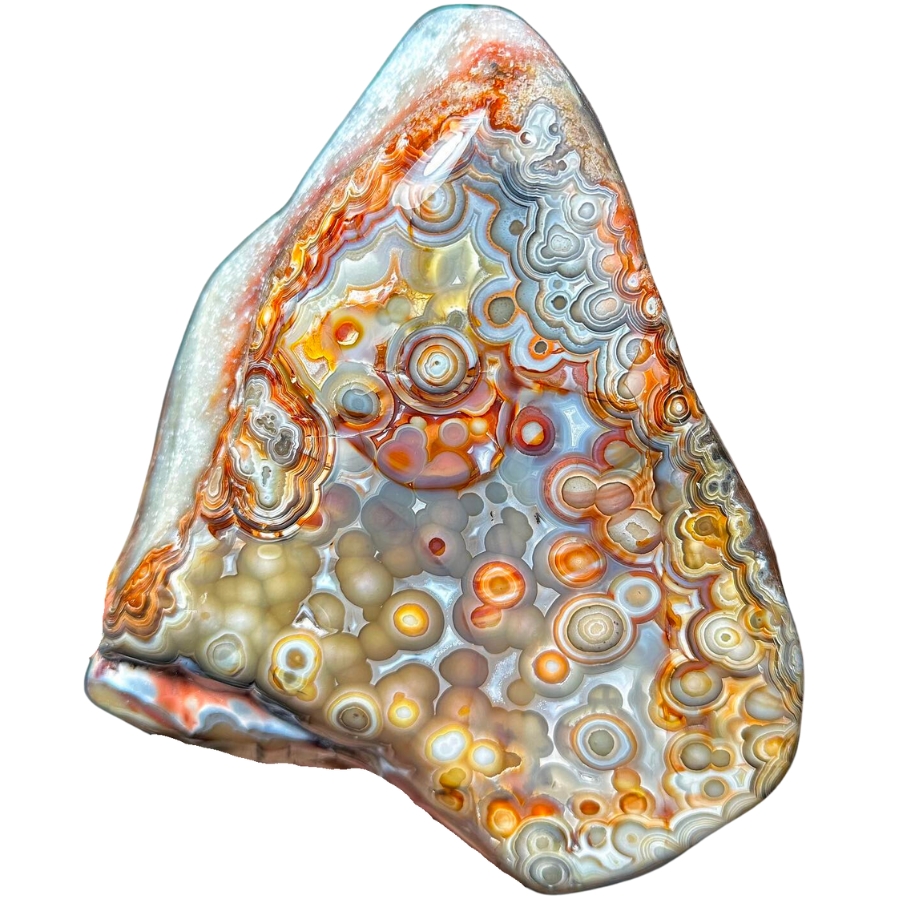
Crazy lace agate is like a party in a rock! It’s got swirls, circles, and all sorts of wild patterns dancing across it.
Its colors can be a mix of red, orange, yellow, and brown, and sometimes even a bit of gray or white.
What makes crazy lace agate stand out is its vibrant and complex patterns. No two pieces are the same. This distinctiveness is a big reason why it’s so valued.
Despite its wild and ‘crazy’ appearance, it’s sometimes called the “Laughter Stone” or “Happy Lace” because of the joy and positive vibes it’s believed to bring.
Laguna Agate

Laguna agate has incredibly sharp and fine banding. It has layers of red, orange, pink, yellow, and sometimes even purple and white all stacked in neat, tight bands.
These bands can form eye-catching patterns, like swirls, loops, and even landscapes.
The different colors of its bands come from various minerals present in the water at the time of its formation.
Laguna agate is considered one of the finest agates in the world due to its exceptional banding. This high regard among agate varieties makes it a prized possession for collectors.
Condor Agate

Condor agate is a real standout. It’s known for its bright, vivid colors and complex patterns.
It has reds, oranges, yellows, and sometimes even blues and greens all swirling together. These colors form in bands or in more random, artistic patterns.
The intensity and variety of its colors is what makes condor agate so special. It’s often used by artists and craftsmen who want to make a statement with their work.
Condor agate’s bold colors and patterns can turn a simple piece of jewelry or art into something really eye-catching.
Fortification Agate (Banded Agate)
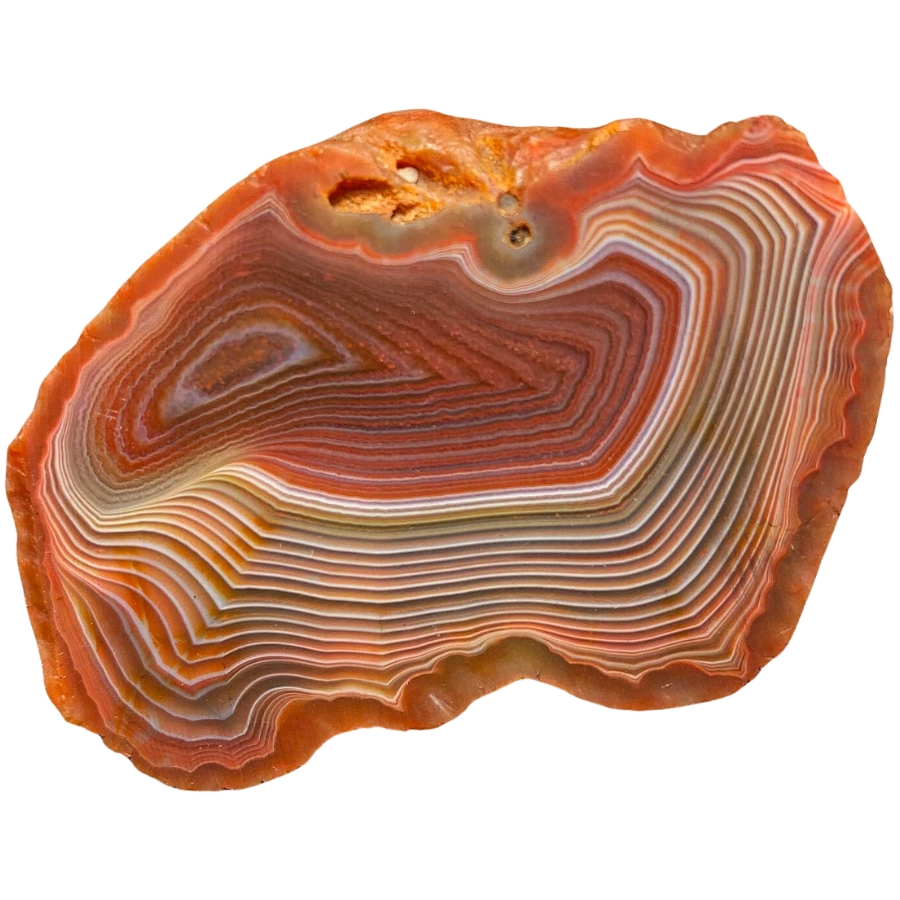
Fortification agate gets its name because the patterns inside it look like the aerial view of a fortified city.
Imagine seeing bands of color forming shapes that look like walls, with sharp angles and curves. They are usually in different colors, making each layer stand out.
If fortification agate is valuable, it’s because of its distinct patterns and colors. Its unique look makes it sought after for jewelry and as a collector’s item.
The clearer and more defined the patterns, the more valuable the stone can be. Some people also believe it can help with relaxation and calmness.
Iris Agate
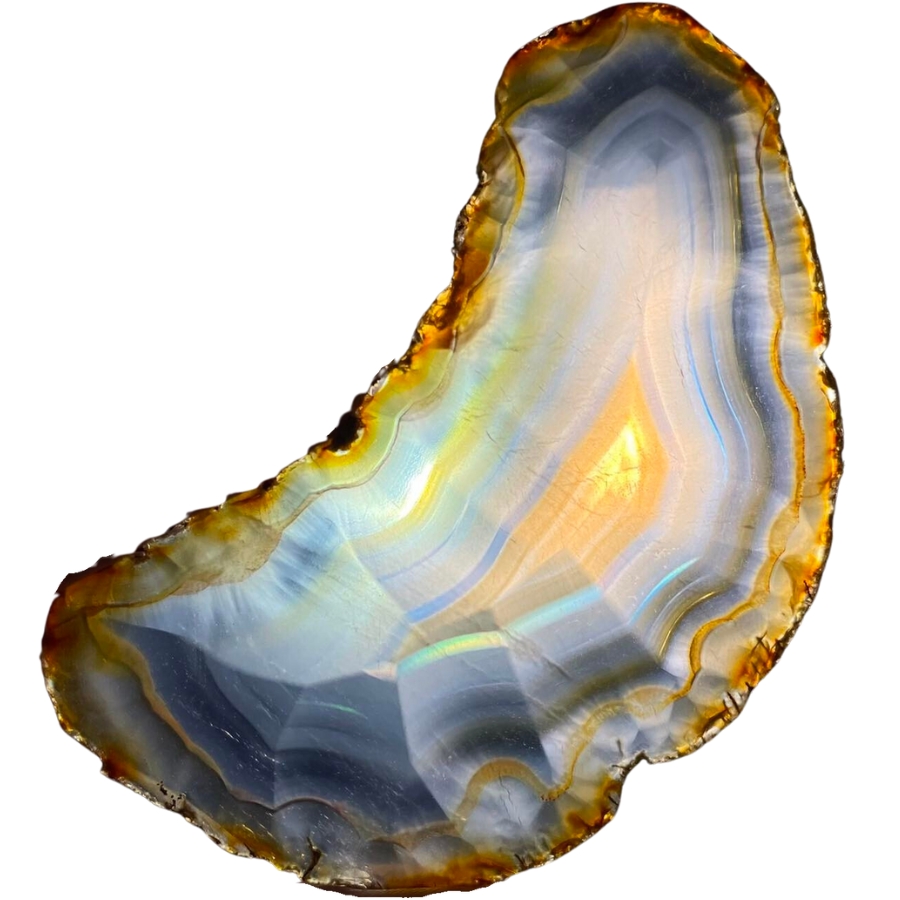
Iris agate looks like a regular agate at first, but when you hold it up to the light, something amazing happens. It shows all these rainbow colors, like light passing through a prism.
This is because it has very thin layers of silica, and when light hits these layers, it splits into all the colors of the rainbow.
The formation of iris agate is similar to other agates, but its layers are super thin, which is what creates the rainbow effect.
The value of iris agate comes from its unique ability to show these colors. In the past, people even used to think it had magical properties because of the way it showed colors. They saw it as a stone of good luck and wonder.
Plume Agate
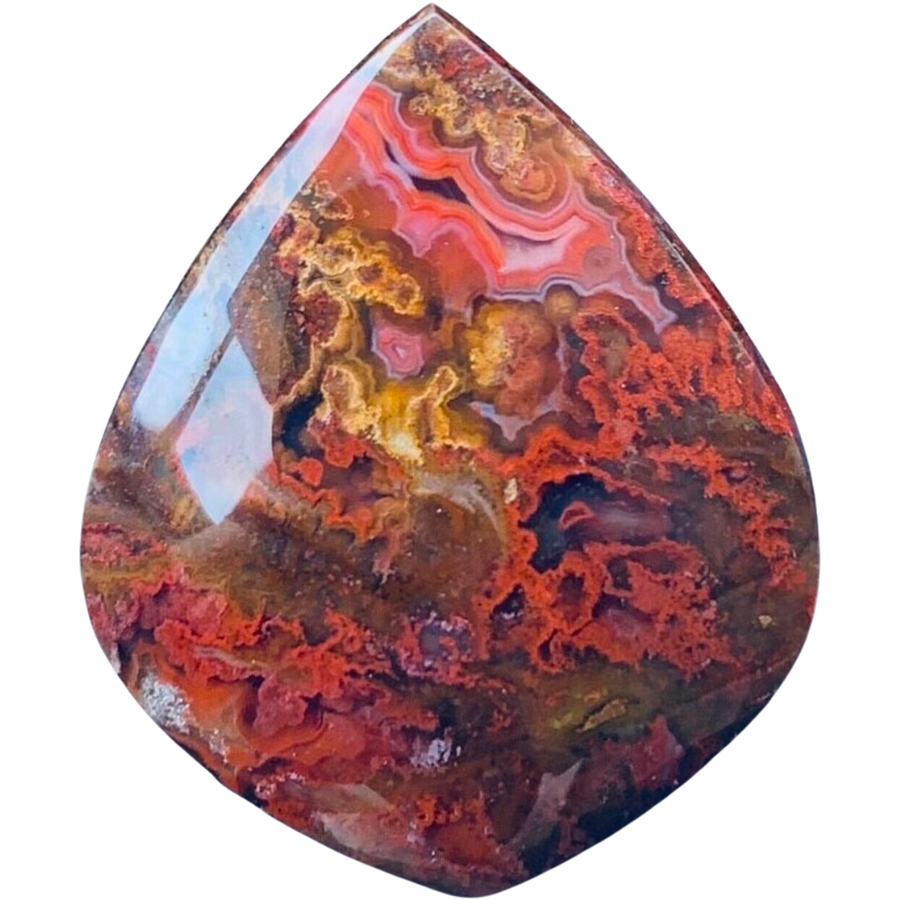
Plume agate gets its name from its patterns that look like soft, feathery plumes. These plumes can be in all sorts of colors: red, black, green, or yellow, set against a translucent or opaque background.
The way these plumes seem to float in the stone makes it look like a frozen underwater scene or like feathers caught in a breeze.
The plumes are made of minerals like manganese or iron oxide, which get trapped in the silica during the agate’s formation and create the feathery patterns.
The price of plume agate can vary depending on how clear and intricate the patterns are. The more detailed and colorful the plumes, the more the stone is usually worth.
Picture Agate (Scenic Agate)
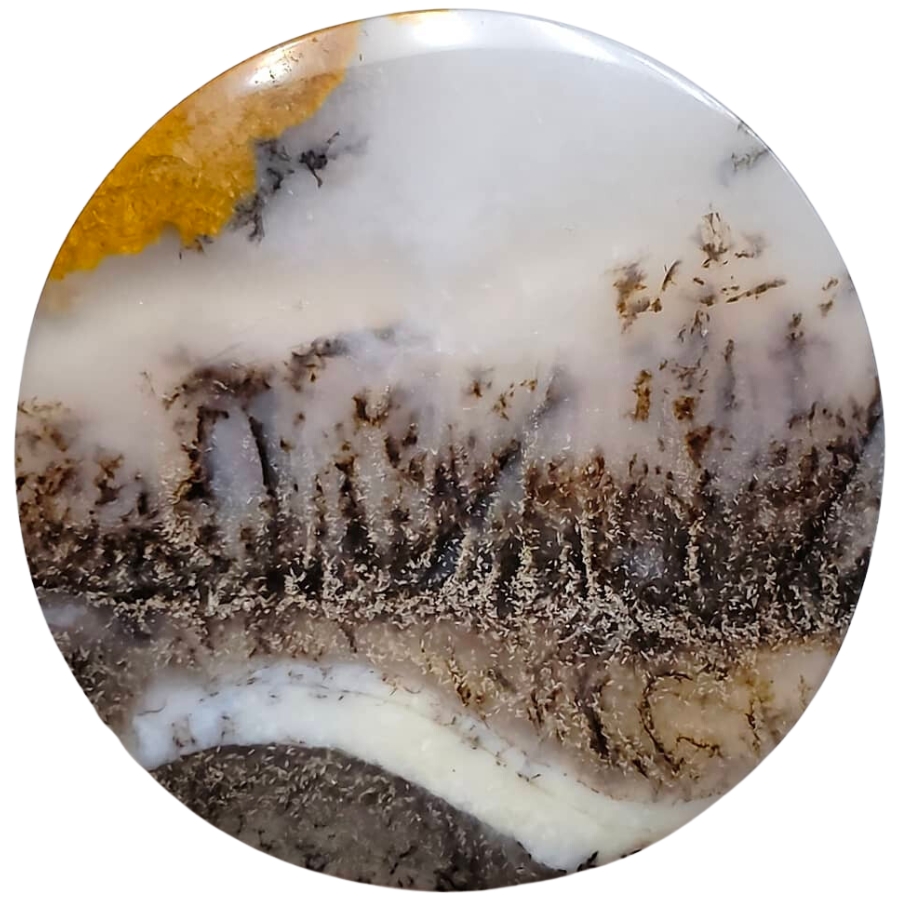
Picture agate is like a snapshot of nature captured in stone because it looks like it has pictures or scenes right inside it.
These “pictures” are actually natural patterns that resemble landscapes, mountains, trees, or even skies. They are usually in different shades of brown, white, and gray against a more translucent background.
The different patterns in picture agate or what’s also called scenic agate are made by various minerals in the water filled with silica that forms it.
If you’re thinking, “What is picture agate worth?“, its value comes from how distinct, clear, and detailed the natural “pictures” are.
Turritella Agate
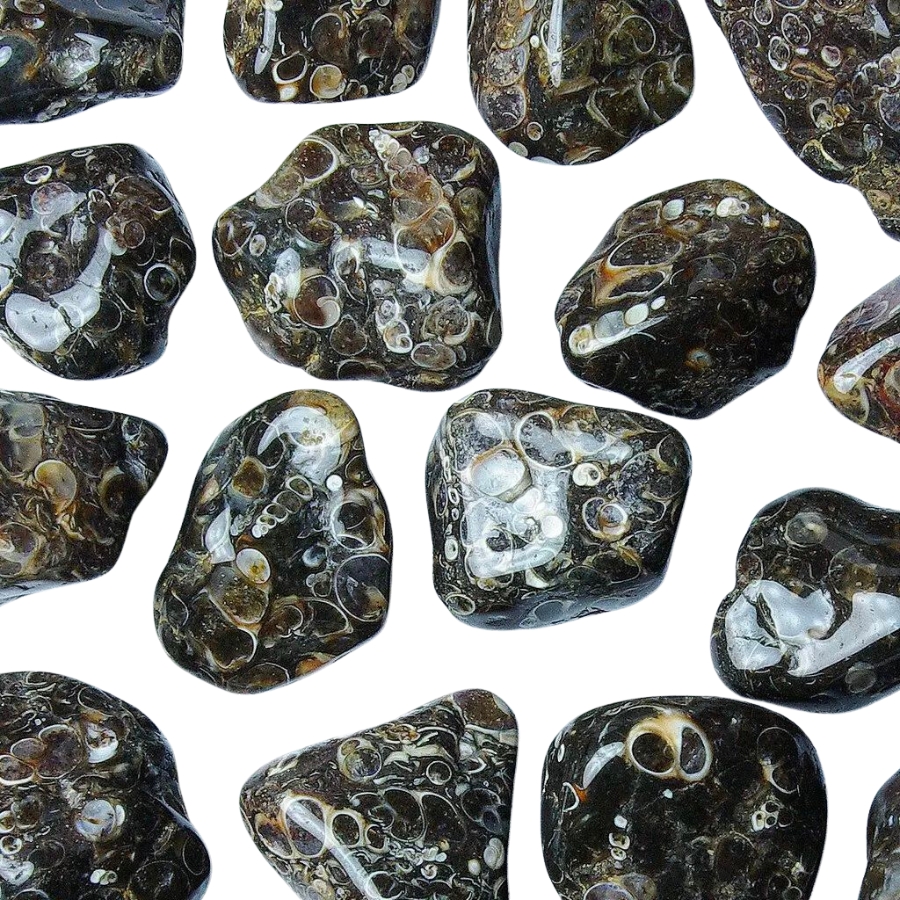
Turritella agate is not your typical agate because it’s full of fossilized snail shells! The shells belong to a creature called Turritella, a type of sea snail.
These shells are tightly packed and create a pattern that looks like a bunch of tiny, swirling towers. The background of the agate is usually a dark, earthy color, which makes the white or cream-colored snail shells really pop.
Over millions of years, these snail shells got buried in sediment and eventually became fossilized. As time went on, silica-rich water flowed through the sediment, turning it into the agate we see today.
The value of turritella agate comes from its unique blend of geology and history. More than a pretty stone, it’s a piece of ancient life preserved in rock.
Fairburn Agate
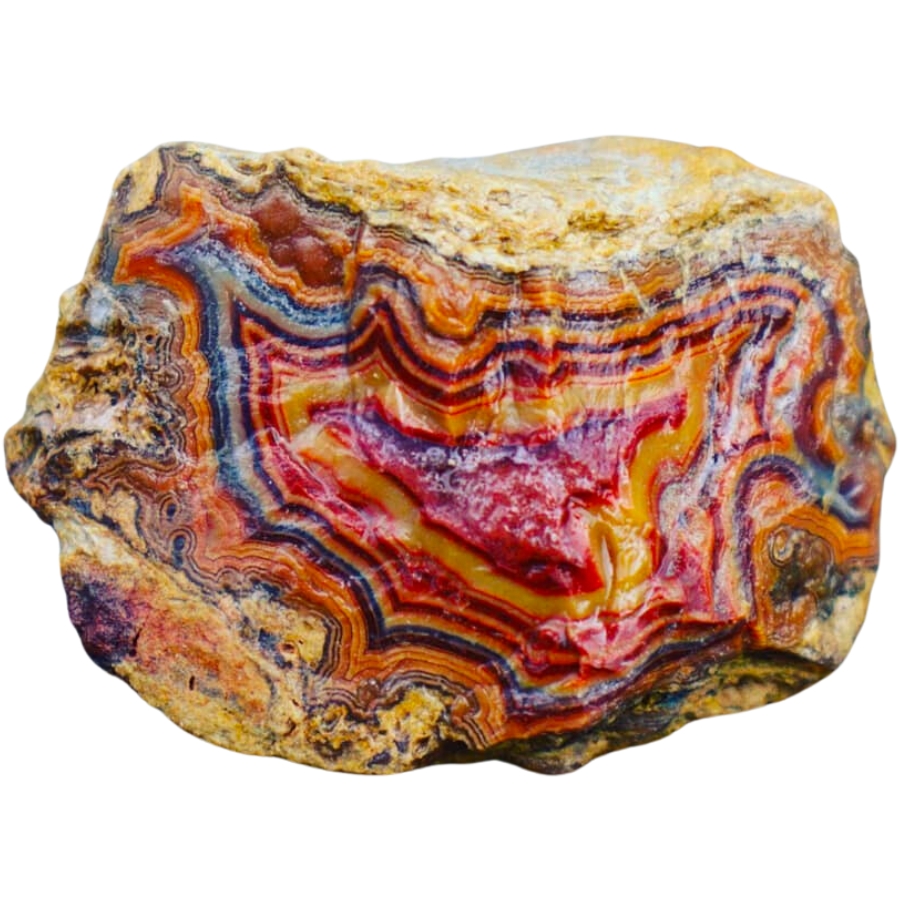
Known for its intricate patterns and bold colors, Fairburn agate is another fascinating type of agate. It usually has bands and swirls of different colors like red, yellow, orange, brown, and sometimes even pink or purple.
What’s special about these patterns is they often look like they’re in layers, creating a 3D effect. It’s like looking at a landscape made of stone.
It’s named after a place called Fairburn in South Dakota. This gives a clue about where it was first discovered.
People value Fairburn agate for the skill it takes to cut and polish it, which makes the patterns and colors really stand out.
Sagenite Agate
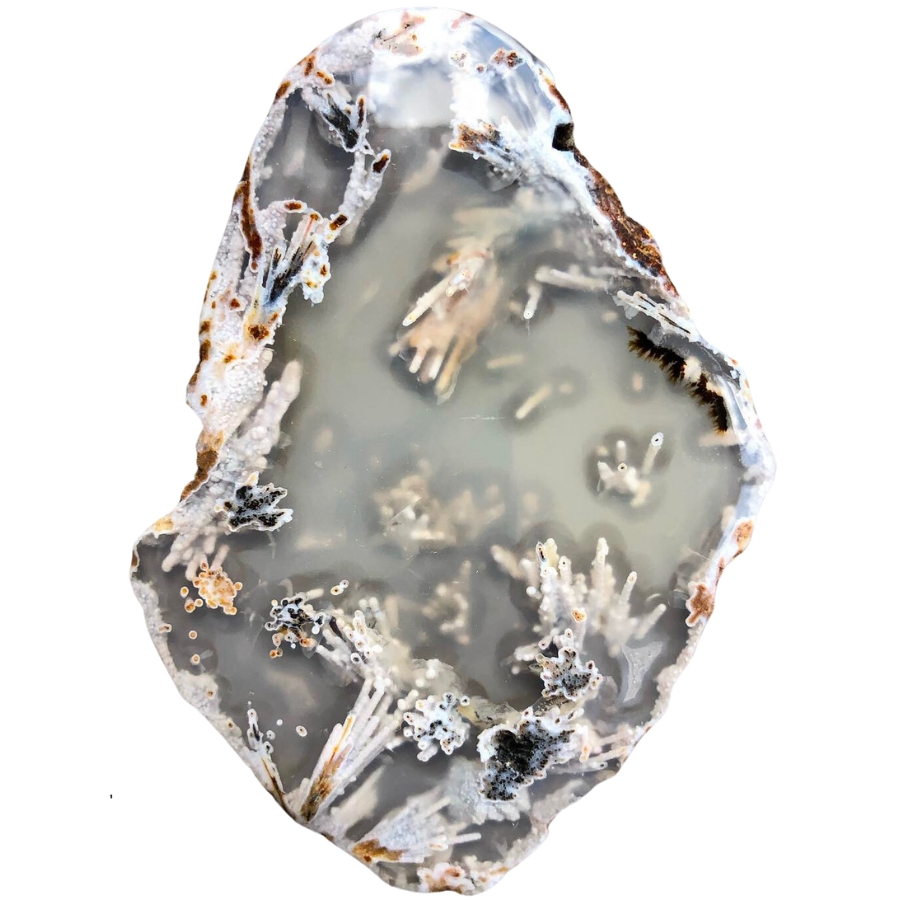
Sagenite agate has needle-like inclusions that look like tiny sprays of crystals inside it. They can be gold, silver, black, or even green, and they spread out in all directions, creating an amazing pattern.
The base of the agate is usually translucent, which lets you see these intricate needle patterns clearly.
These patterns are actually other minerals, like rutile or goethite, that get trapped inside the forming agate. These minerals grow in a crystal shape, looking like needles or hair.
Sagenite agate is often used in jewelry and other decorative items, with some people thinking that its needle patterns look like fireworks or starbursts.
Tree Agate

Tree agate, as its name suggests, looks like it’s got tiny trees or branches inside it. These tree-like patterns are usually green and spread out against a white or light gray background.
The green patterns aren’t actual trees, though. They’re made of minerals like chlorite or manganese.
Each piece of tree agate is different. You won’t find two that are exactly the same. It’s valued for its looks and it’s often used in jewelry and decorations.
The key factors in our recommendations are:
- The deep experience and understanding of our team about the area
- Recommendations from local groups and clubs
- How easy it is to get the a particular location
- Safety and potential hazards when collecting
- Weighing private and public locations
- The ability for both experienced and novice agate enthusiasts to find great samples
With these factors in mind we’ve been able to put together a fantastic list that just about anyone can use!
Kids. Beginners. Pros. Doesn’t matter. This book has become the go-to because it works for everyone.
Magy put it bluntly: “Identify rocks, crystals and minerals is so easy now!”
That’s not by accident, the photos are crisp, the callouts are simple, and the design is rugged enough to throw in a backpack without worrying. Whether it’s your first geode or your hundredth, this guide keeps the fun part simple: finding more treasures.
The Best Spots To Find Agates in Georgia

Here are our suggested places in the state where you can find agates. Even though there are many excellent places to find gems in Georgia, not all are suitable and can contain agates.
Always Confirm Access and Collection Rules!
Before heading out to any of the locations on our list you need to confirm access requirements and collection rules for both public and private locations directly with the location. We haven’t personally verified every location and the access requirements and collection rules often change without notice.
Many of the locations we mention will not allow collecting but are still great places for those who love to find beautiful rocks and minerals in the wild without keeping them. We also can’t guarantee you will find anything in these locations since they are constantly changing.
Always get updated information directly from the source ahead of time to ensure responsible rockhounding. If you want even more current options it’s always a good idea to contact local rock and mineral clubs and groups
Chattahoochee River
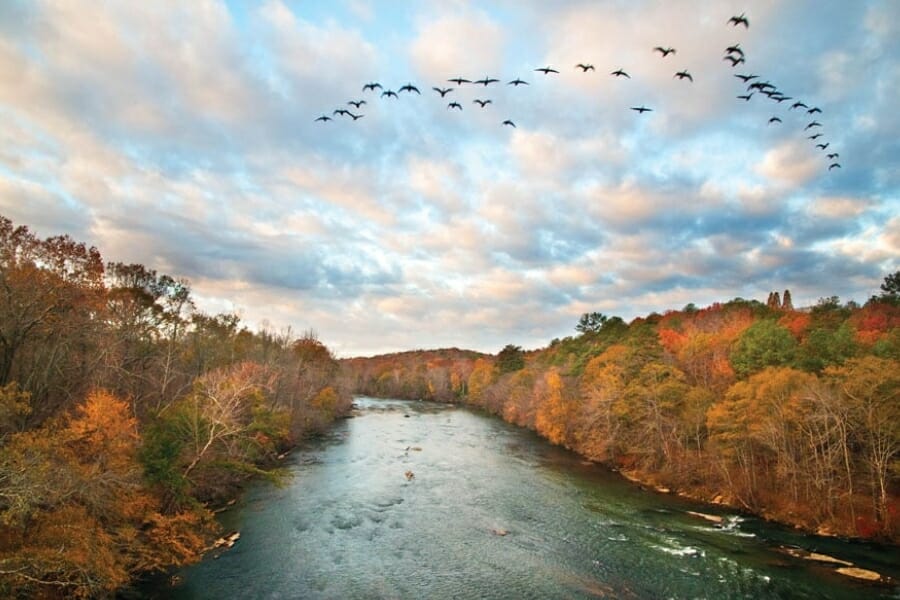
The Chattahoochee River runs for about 430 miles through various landscapes, such as mountains, rolling hills, and forests. This makes it an excellent place for agates to form and be left behind.
Because the river’s geology is so different and has been around for a long time, agates have had many chances to be carried by the river and left along its path. Agates in the Chattahoochee River can have different colors, patterns, and sizes, making each find unique and exciting.
Before bringing your agate crystals home from Georgia, know the most recent rules about collecting there.
Where we found agates in the Chattahoochee River
People like to go to the part of the river near Helen, Georgia, because it has beautiful scenery and gravel bars with agates. The area around Morgan Falls Dam in Sandy Springs has also been suggested to look for agates.
Etowah River
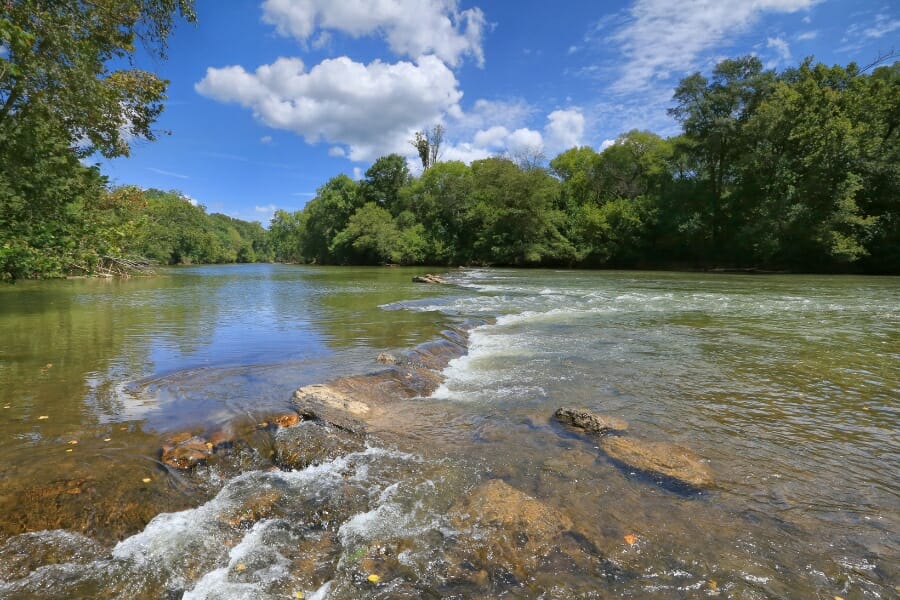
The Etowah River flows through various rock types, including igneous, metamorphic, and sedimentary rocks. These kinds of stones could be places where agates form.
The constant flow of the river and the movement of sediments help expose and move agates over time. This makes the Etowah River a great place to go agate hunting.
The river is about 164 miles long and flows through beautiful places like rocky outcrops, forests, and rolling hills. These different kinds of land allow agates to form and be left behind.
Where we found agates in the Etowah River
Most of the time, you can find agates in riverbeds, gravel bars, and other places where erosion has exposed them. These locations are more likely to contain agate nodules or loose agate pebbles.
Savannah River
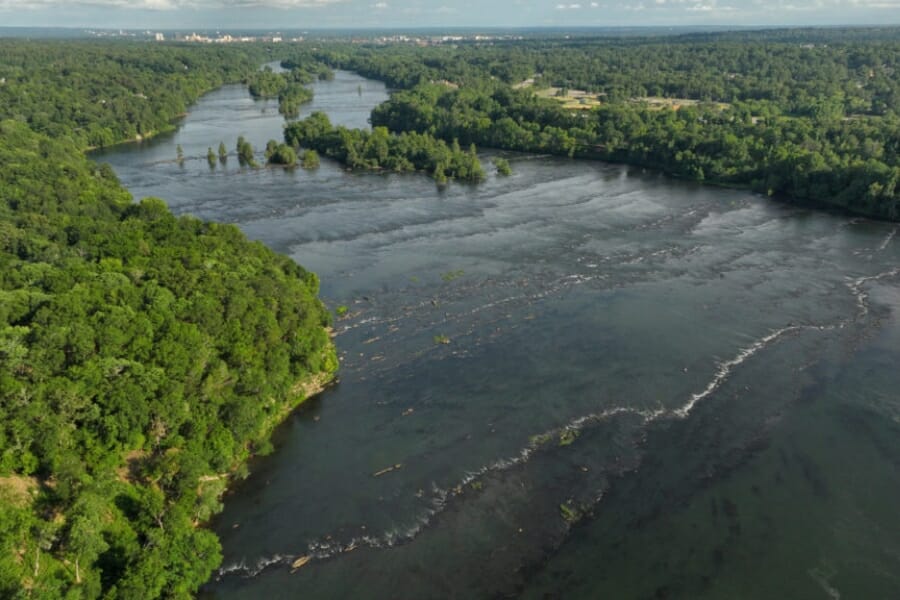
The river flows through different kinds of land, such as rocky banks, sandbars, and open riverbeds. Because of these changing conditions, agates can form and be found in the Savannah River, making it an excellent place for people looking for them.
Agates are often found where a river has eroded its banks or where sediments have been deposited, such as gravel bars and sandbars. In these places, you might discover agate nodules or loose agate pebbles that the river’s flow has carried and exposed over time.
While taking in the beauty of the Savannah River, agate hunters can enjoy the adventure of looking for these beautiful stones in Georgia’s waterways.
Where we found agates in the Savannah River
You can find exciting specimens when you explore parts of the Savannah River that have agates. Some places, like the part of the river near Augusta, Georgia, are good places to look for agates.
Soque River
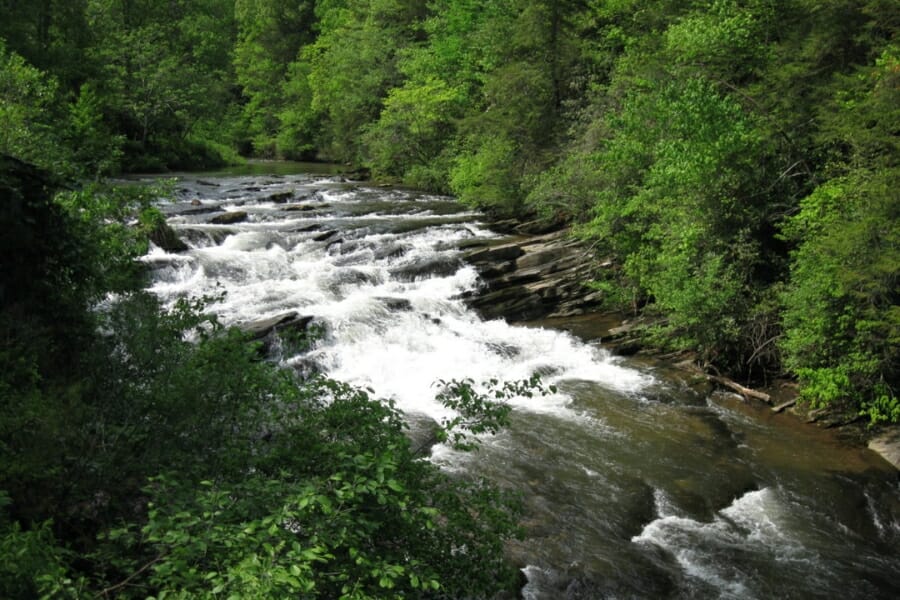
The Soque River flows for about 30 miles through beautiful scenery. It’s known for its clear waters, rocky outcrops, and gravel bars, which make it an excellent place for agates to form and settle.
There are many different kinds of rocks in the area, including sedimentary and metamorphic rocks, which could be the host rocks for agates. Agates are often found where the Soque River has worn down its banks, exposing gravel bars and sediments that contain agates.
Where we found agates in Thompson Creek
To maximize the chances of finding agates along the Soque River, exploring gravel bars, sandbars, and areas where the river’s flow has caused erosion is advisable.
Taylor Ridge
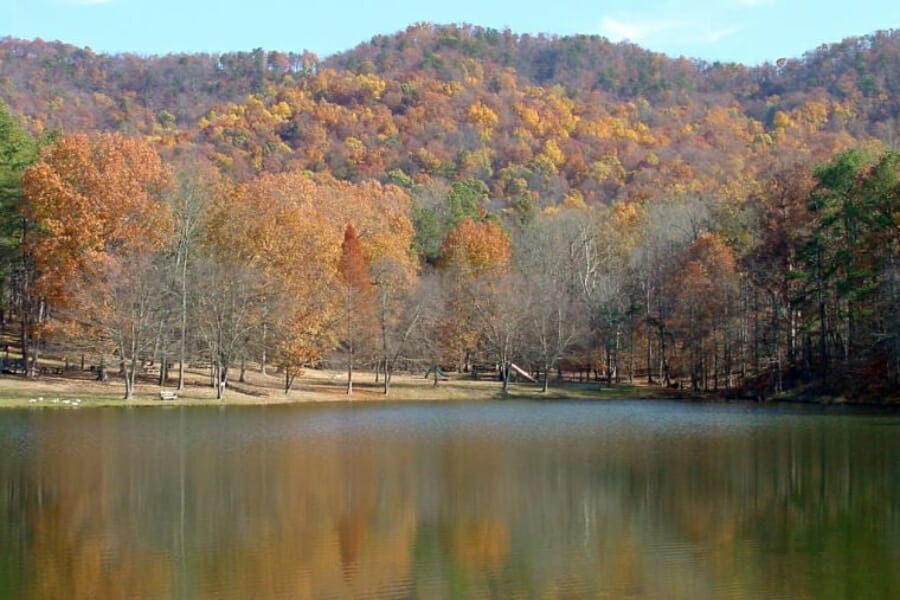
Taylor Ridge is an excellent place to go agate hunting because of its unique geology and the chance of finding agates there. Taylor Ridge is a geological formation in the northwest of the state that looks like a ridge and is made up of sedimentary rocks like limestone and chert.
Taylor Ridge has agates because it has chert, a silica-rich rock often found with agates. Chert nodules and layers in sedimentary rocks can be home to agates, which form over time as mineral-rich fluids fill the rock cavities with silica.
Where we found agates in the Taylor Ridge
If you want to find agates in Taylor Ridge, you should look in places where you can see chert formations. Along Taylor Ridge, you might be able to find agates in places like gravel beds, riverbanks, and roadcuts.
Other Great Places To Find Agates in Georgia

After revealing where to find the best agates in Georgia, we’ll give you some other ideas. We put them in order by county to help you out.
Our recommendations by county
| County | Location |
| Bibb | Holton Quarry |
| Burke | Brier Creek |
| Chattooga | Fish Hatchery |
| Cherokee | Cochrun Mica Mine |
| Cobb | National Cemetery |
| Crisp | Cordele area fields and cut banks |
| Gwinnett | Addison Lowe Farm |
| Jones | Round Oak area |
| Meriweather | Warm Springs out of town along railroad area |
| Murray | Spring Place area roadcuts |
| Muscogee | Upatoi Creek |
| Upson | Wilmoits Ravine |
| Washington | Hugh Taubutton farm |
| Wilkinson | Gordon area in gravels along nearby lake shore |
Additional areas you can find agates
We want to ensure your search works because Georgia is a big state. Here are some places where agates are often found.
Railroad cuts
Railroad cuts show a cross-section of the earth’s layers, offering many geology types. You can often find agates made by various natural processes within these layers.
As the cuts reveal different types of rocks, like sedimentary, volcanic, or metamorphic, collectors can find various agates with patterns, colors, and mineral inclusions.
By digging in railroad cuts, you can get to places where they can look for agates. Because of the exposed rocks and loose dirt, it’s easier to find agates that are buried in the layers or lying around on the ground.
Rivers and riverbanks
Rivers constantly change the landscape around them by eroding rocks and minerals along their paths. This constant movement slowly brings to the surface agates hidden under the surface before.
As the river moves, it moves the agates from where they were and carries them downstream. When the water hits obstacles like rocks or gravel bars, these agates end up on the riverbanks, which are accessible for you to find.
Riverbanks are the perfect places for agates to build up. Different layers of sedimentary, volcanic, or metamorphic rocks that are exposed along the river’s edge could contain agates.
Road cuts
Roadcuts are safe places for collectors to look for agates because they are controlled. It’s easier to find agates in the layers or scattered along the cut because the rocks and loose dirt are showing.
Roadcuts are also easy to get to because they are usually next to roads or highways. This makes it easy for agate collectors to explore and find agates there.
Also, roadcuts often go through different landscapes, including places with unique rock formations. This allows you to combine their love of agate hunting with the excitement of exploring as they travel to other areas and find many different agates.
Streams and creeks
Streams and creeks run into rocks, bends, and gravel bars, making natural places for water to pool. These places are great places for agates to settle down and build up.
Gravel bars, in particular, are places where agates gather because they are dense and don’t wear away quickly. Many different agates can be found along the banks and in these sedimentary deposits.
Streams and creeks are smaller than rivers and can be explored more easily with focus. You can move through these bodies of water and look for agates in nooks, crannies, and outcroppings of bedrock if you pay close attention to detail and pay close attention to what you see.
Common Agate-Hunting Questions
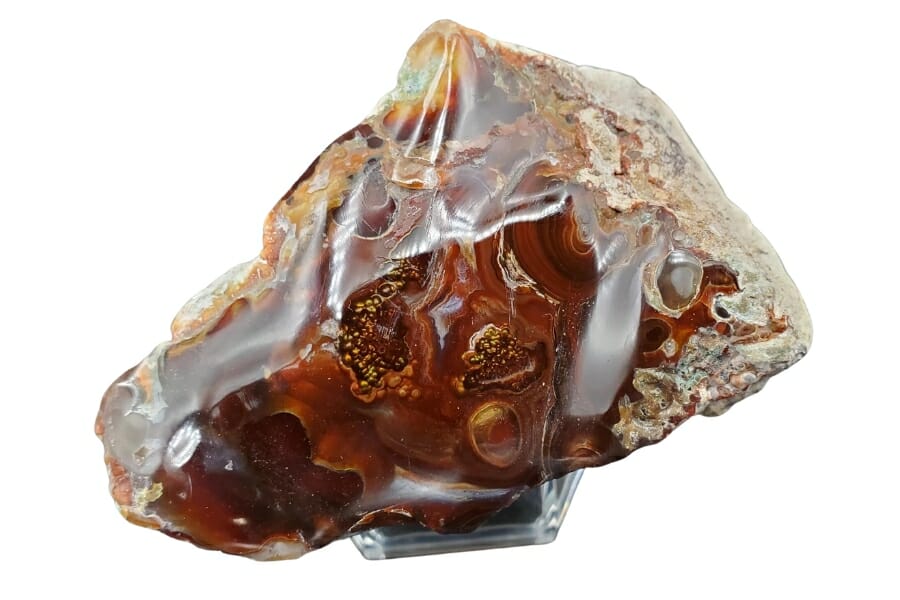
People who look for agates in Georgia often ask the following questions about these specimens, and it’s essential to know the answers.
Is it illegal to collect agate in Georgia?
If you do it correctly, Georgia is an excellent place to look for agates. When you’re in a public place, it’s best to follow the rules. Make sure you have permission to go on private land before you do.
The Best Places To Buy Agates In Georgia

Not everyone likes to spend the whole day outside looking for agates. Sometimes all you need is a new piece to display or another pretty agate specimen to add to your collection. Here’s a list of places in Georgia where you can buy agate crystals:
- Cottage House Crystals – 145 Forest Blvd Suite 405, Dawsonville, GA 30534
- Crystal Blue – 1168 Euclid Ave NE, Atlanta, GA 30307
- The Mineral Gallery – 155 Mill Rd #13, McDonough, GA 30253
- Outpost Gold and Gem Mining Co. – 7901 S Main St, Helen, GA 30545
- Stoneage Natural Rocks and Crystals – 3333 Buford Dr #1022, Buford, GA 30519
If you have any recommendations for our list please leave a comment below!

